16 Dec Neethi Lizbeth Abraham


The harsh coastal environment is only adaptable to few species of trees that can tolerate broad variations in temperature, moisture and salinity.
Mangrove ecosystems have been stabilizing the climatic conditions of the earth since evolution. In addition to amazon rainforests & the coral reefs, the mangrove forests are vital ecosystems that contribute to a habitable planet. They are the tropical trees that thrive in inter-tidal zones between 25° N and 25° S latitudes where fresh water intersperses with salt water, anchoring shorelines to buffer coastal ecosystems against hurricanes and tsunamis. The harsh coastal environment is only adaptable to few species of trees that can tolerate broad variations in temperature, moisture and salinity.
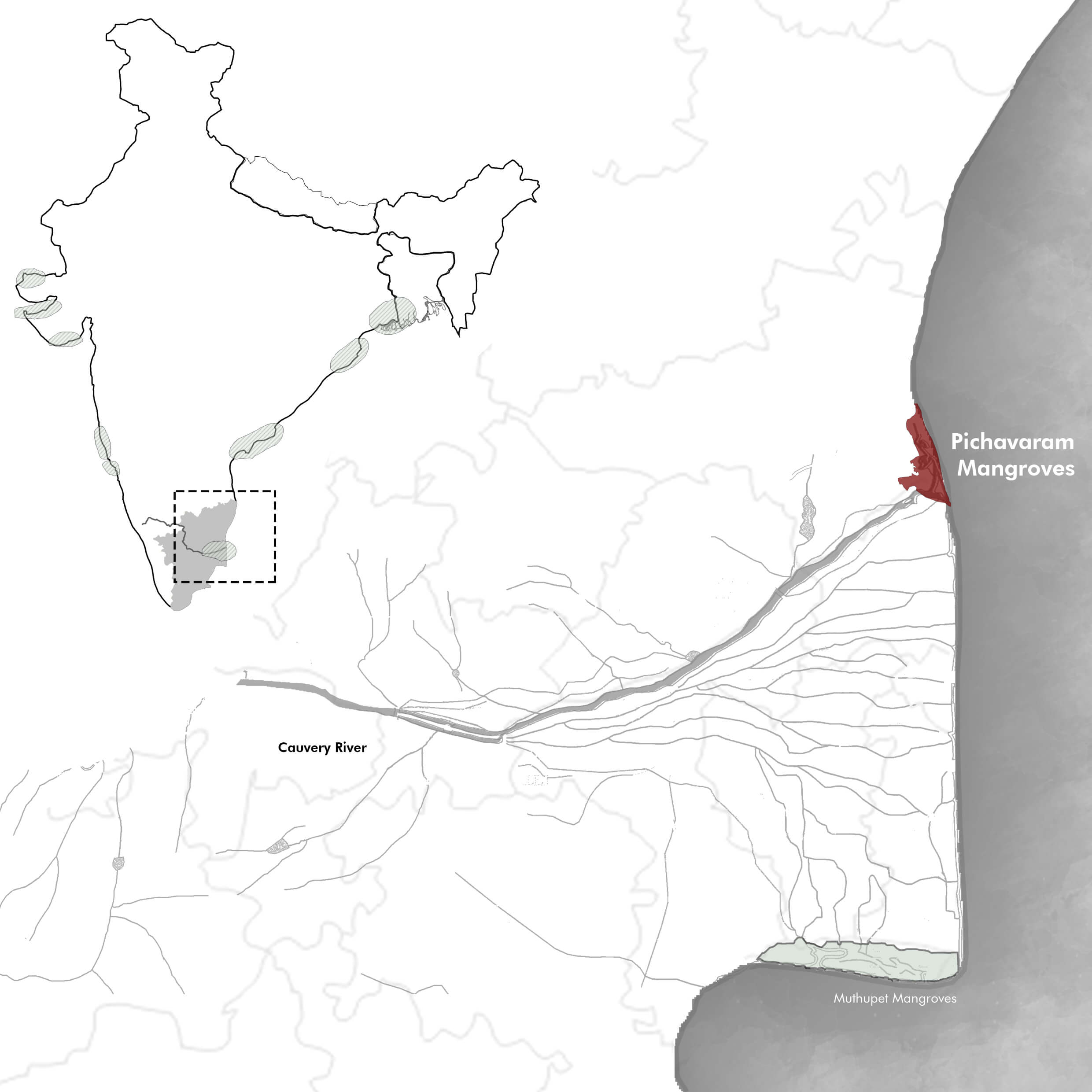
Pichavaram Mangrove Forest in Tamil Nadu, the second largest in the world is a reserved forest under the Govt. of India, surrounded by 18 villages which are expanding towards the mangroves. Pichavaram area between Cooleron and Vellor rivers that comes under Cauvery deltaic mangroves consists of several islands interspersing vast expanse of water covered with Mangroves. The Area is about 1100 hectares, separated from Bay of Bengal by a sand bar and the second largest Mangrove forest of the world.
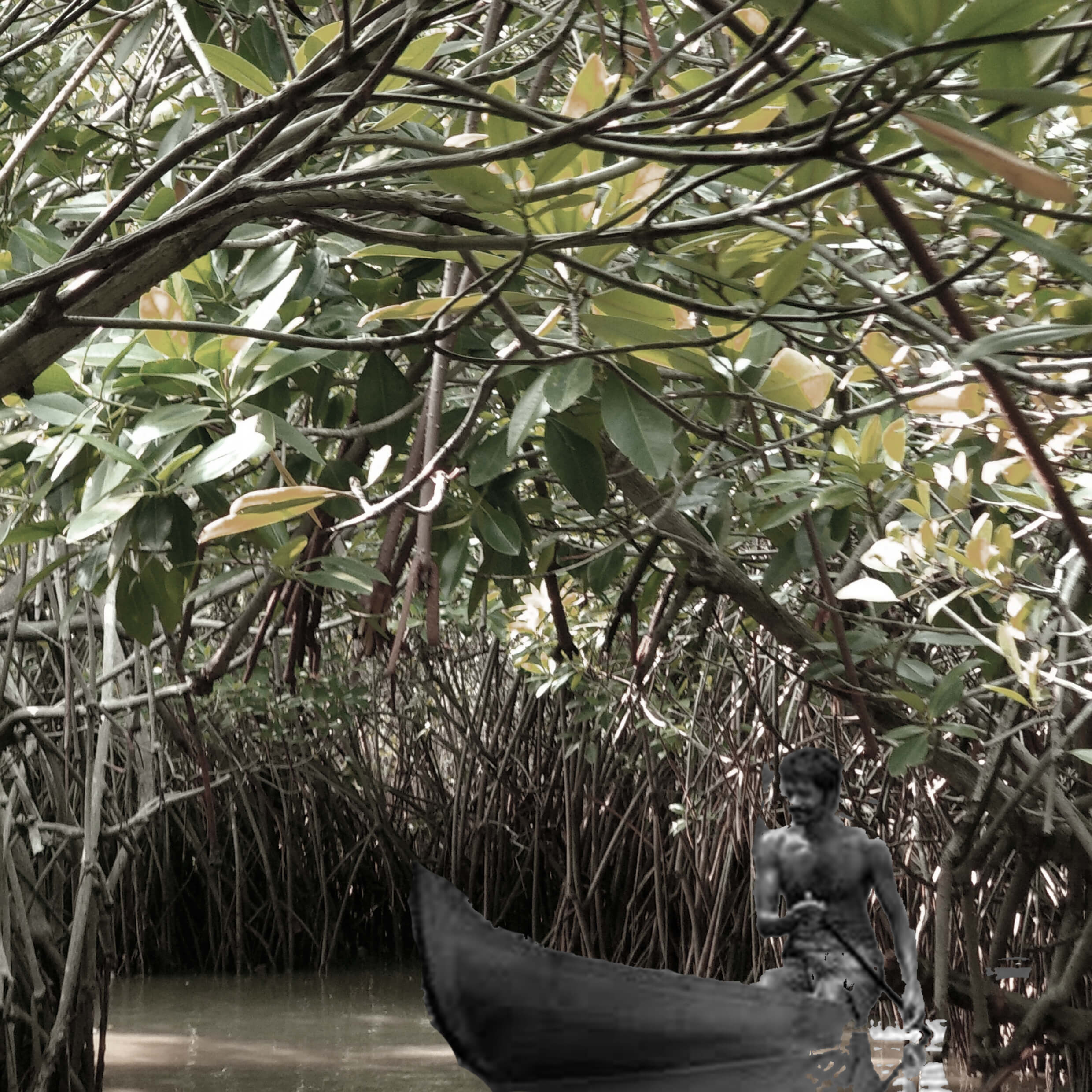
As per the first mapping in 1930, the forest covered an area of 1165 Ha. Unofficial records and local information imply a total expanse of 4000 Ha which was further reduced and degraded to 411 Ha by 1994 due to frequent cyclones every alternate year which devasted several mangrove species. Geographical and geological conditions of Pichavaram makes it a marshland;biotope consists of species like Avicennia and Rhizophora where it also supports the existence of rare varieties of economically important shell and finfishes. The area predominantly has “Irula tribal population” whose livelihood is based on shrimp farming, agriculture and timber from the mangroves.
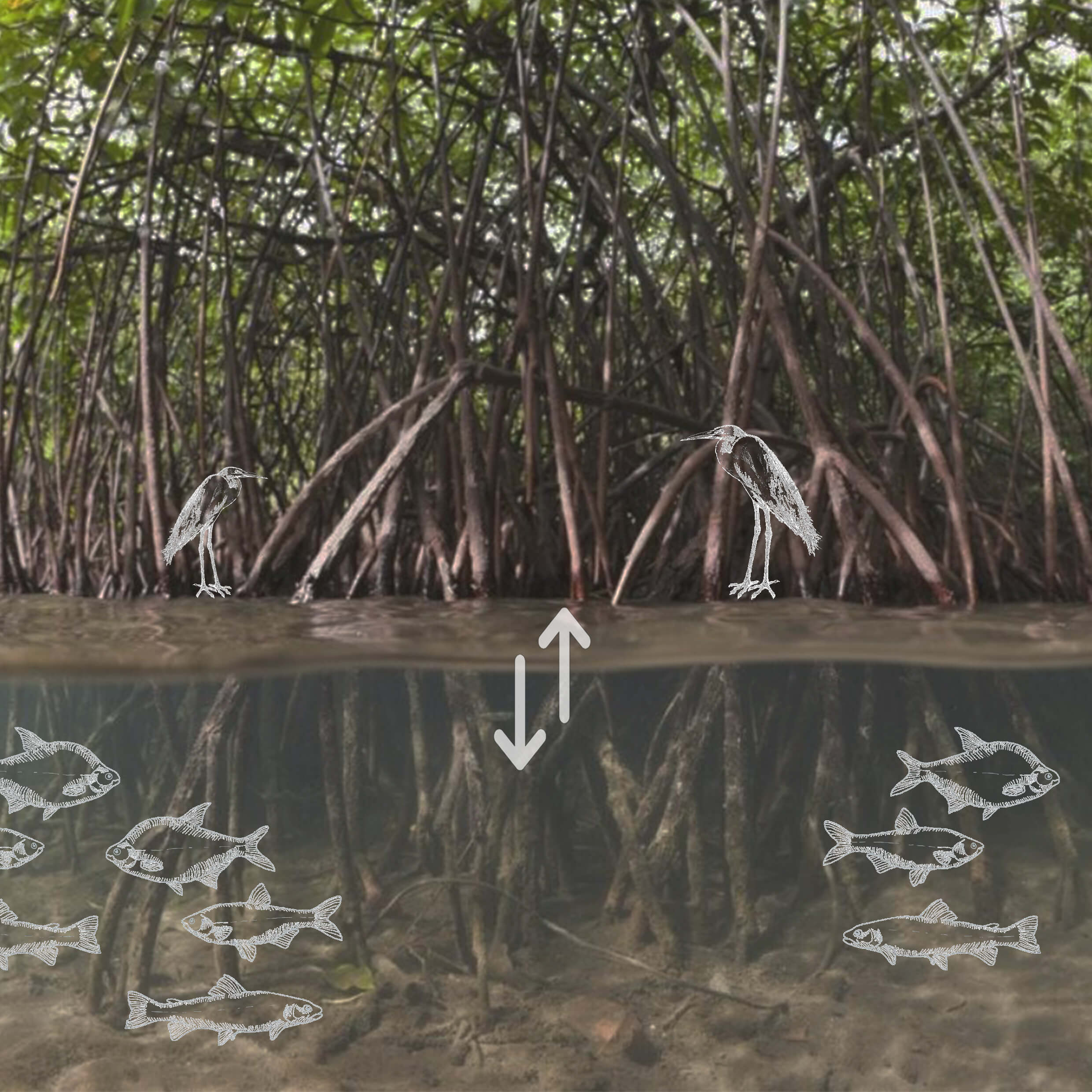
Being in a cyclone prone district of Cuddallore, the mangroves had been protecting these tribes in Pichavaram for centuries, the notable one is the bio-shielding ability of the mangroves that saved 4500 Irulas from Tsunami 2004. There was harmonious co-existence between man and mangroves until 1930s when the decline of mangroves commenced with extensive aquaculture, urbanisation of Chidambaram temple town, expansion of the villages and uncontrolled tourism.
Globally, the tree cover loss in Mangroves is increasing at an alarming rate since 2001, highest loss being in Asia with a total loss of 250,000 hectares.
Globally, the tree cover loss in Mangroves is increasing at an alarming rate since 2001, highest loss being in Asia with a total loss of 250,000 hectares. Agriculture developments and widespread fuelwood collection has reduced the extent by 31.05% of Pichavaram in particular. This alteration led to loss of biodiversity and species richness of the ecosystem. Multiplied invasive species altered the natural environment in addition to the chemicals. There was a sudden increase in the phosphate and nitrate concentration in the mangrove environment after tsunami from the retreating water, which carried the waste from the agricultural fields and aquaculture ponds to this ecosystem.
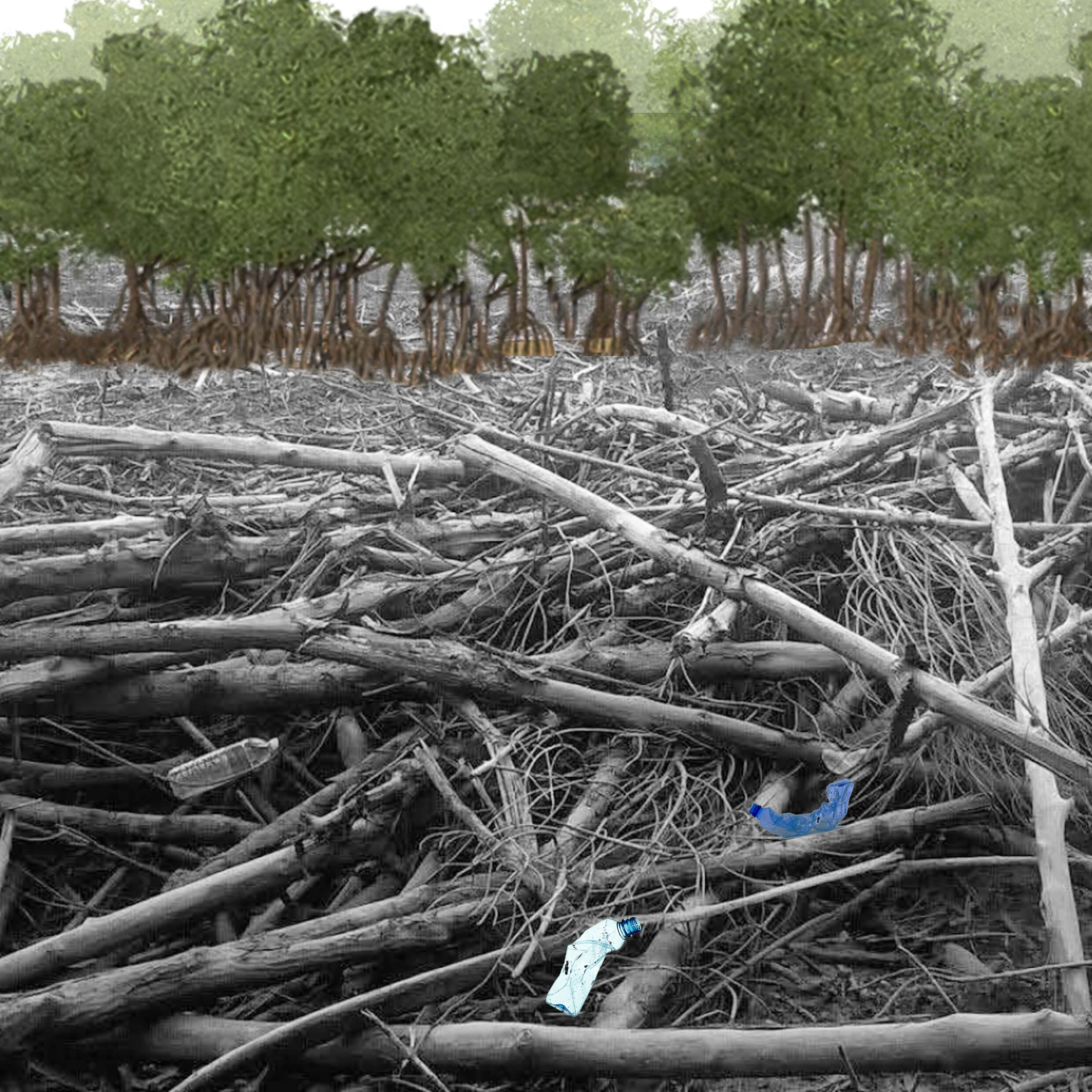
The existing access to these mangroves are through motor and row boats from a tourist centre run by the Govt. of Tamil Nadu. This significant node is in proximity to the existing villages and shares an undefined boundary. A pattern of increase in tourism is observed here despite a lack of basic facilities and mismanagement. Uncontrolled tourism and expansion of the villages are potential threats to the mangrovian ecosystem. Post 1994, when decline of the forest reached up to 10% of its initial extend, NGOs together with public participatory programs initiated afforestation of Pichavaram Reserve Forest and its extensions. The program adopted the restoration strategy of “fish-bone pattern” has been successful in regaining the ecosystem up to 1100 Ha in 2018.
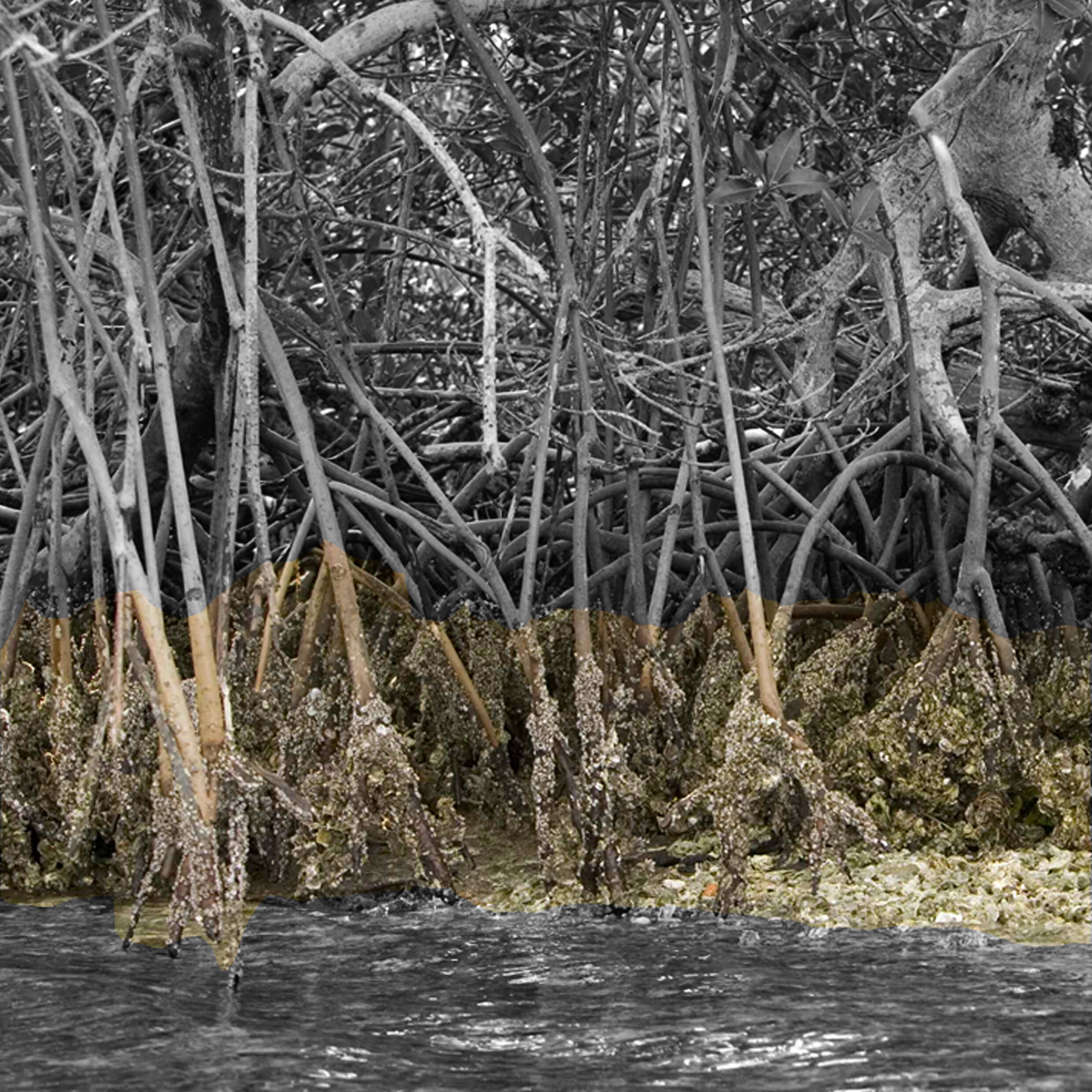
The restoration employed canal techniques, instead of simple plantation of seedlings, where a fish bone pattern of canals was utilized. This fishbone design was scientifically proven to be an efficient method of facilitating tidal flushing where the main canals were dug at an angle of 45° to the natural creek. The side canals were dug at an angle of 30° to the main canal. Improper greywater management is an added challenge where waste water from the settlements get collected into canals and reaches the backwaters untreated. Annual inundation up to 1m is a potential threat disrupting the economic and environmental stability of these villages. The tangible and intangible disconnections between public and locals are to be addressed where awareness can be made in a better way.
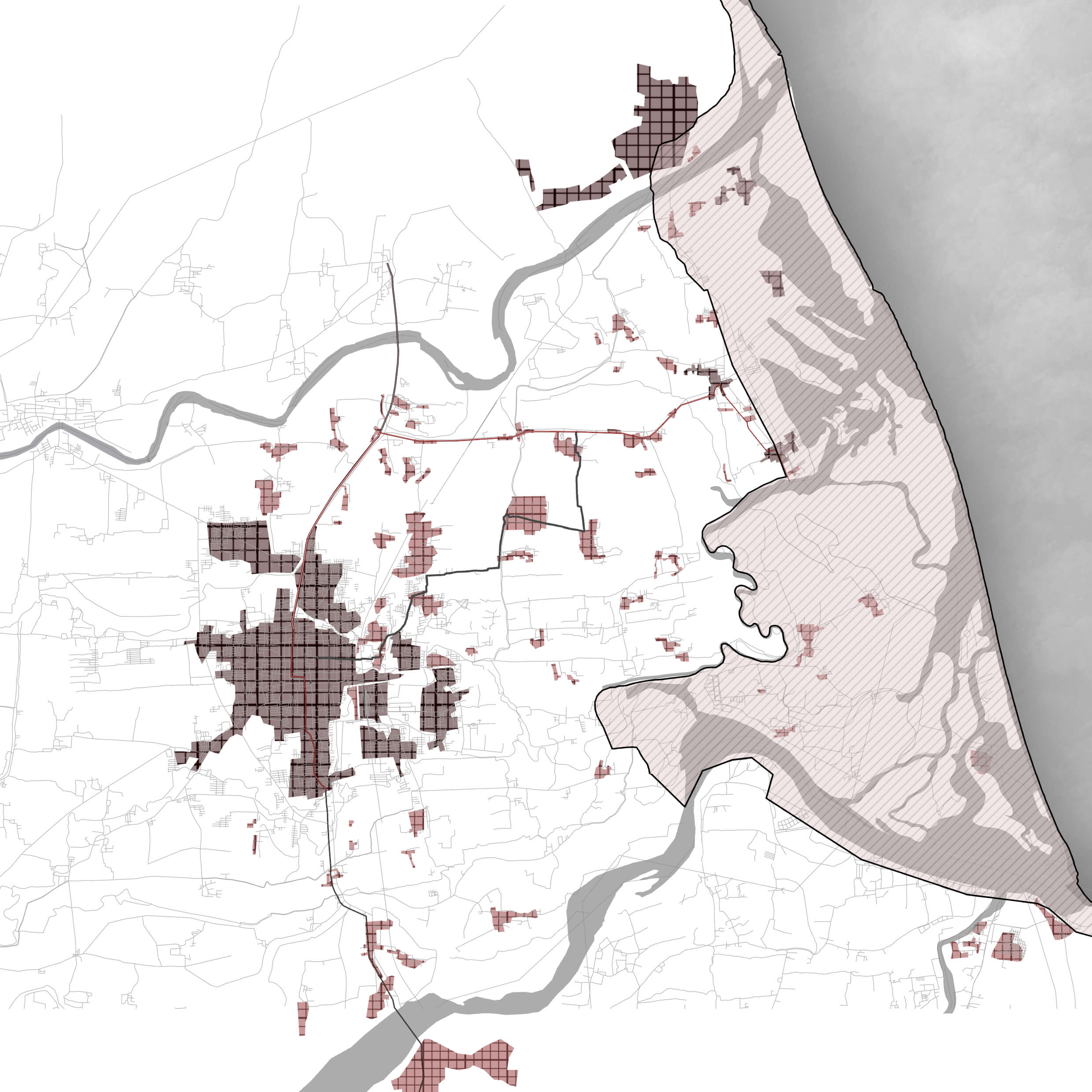
The proposal provides a framework for understanding and describing the interactive conditions of human settlements within their environments as a set of interdependent relationships based on the Systems theory in Landscape Architecture.
The future of mangroves is highly dependent on human action and vice versa. The intervention strategies focus on introducing layers of lifestyle, people and feedback from various systems concerned with the region. The Cauvery River forming the Cauvery deltaic mangroves of Pichavaram has its significance as it shaped the sustainable lifestyle of the people in the past times and cultural importance. The challenge of the situation is to manage the settlement growth and sustainable improvement of people’s lifestyle by catering to ecological, cultural and social scenario.
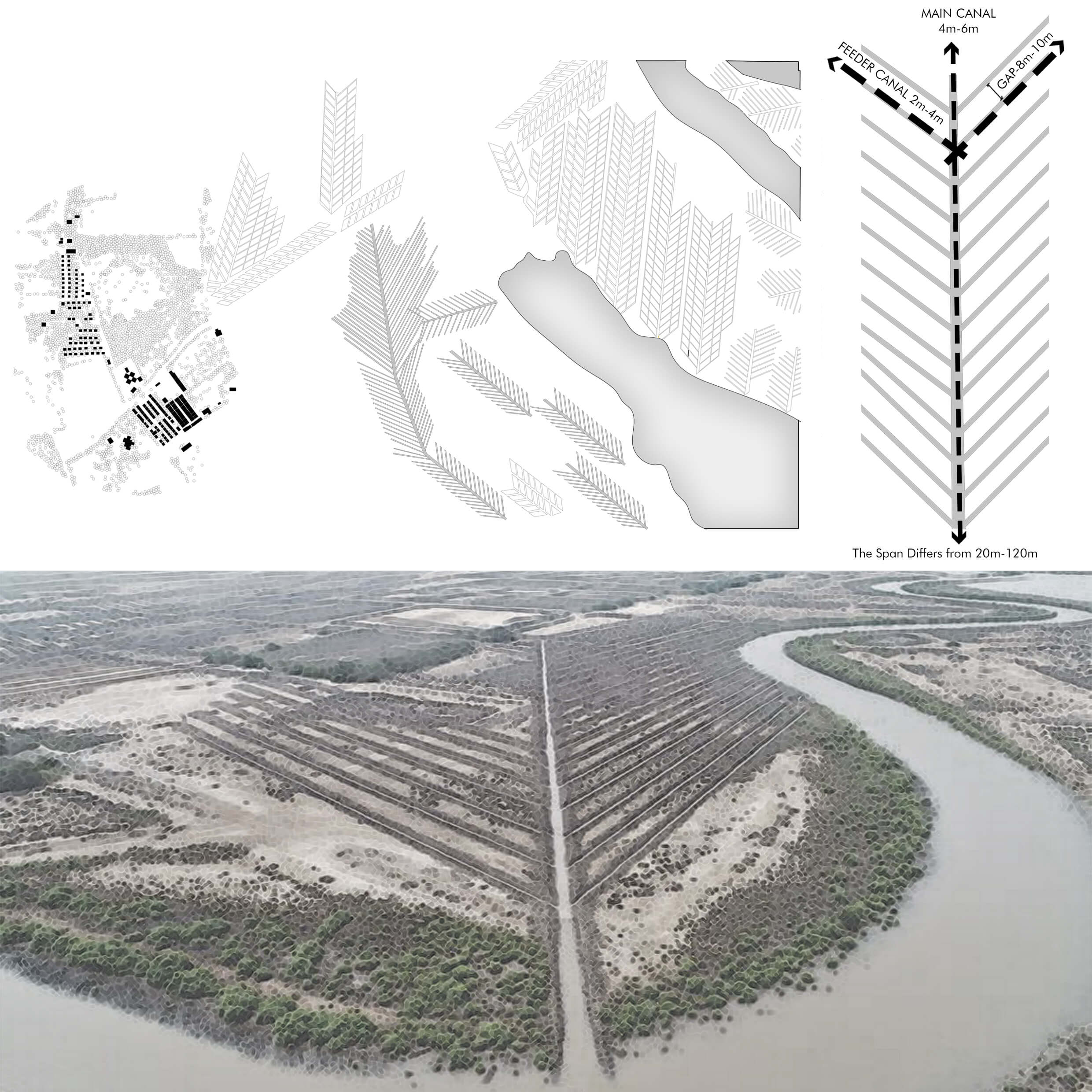
The proposal provides a framework for understanding and describing the interactive conditions of human settlements within their environments as a set of interdependent relationships based on the Systems theory in Landscape Architecture. One of the villages is studied and a potential site is proposed as a Botanical Garden with a mangrove Research Institute, where the mangrove species are researched upon and grown with an insight of the ecologically balanced biological benefit within a premise to least permanent human intervention. This can be intervened as a prototype for the local architectural design using sustainable techniques of building materials and climatic responsiveness. The landscape design in the proposal also advocates public initiatives by incorporating people living in immediate contexts to attain a better quality of life.
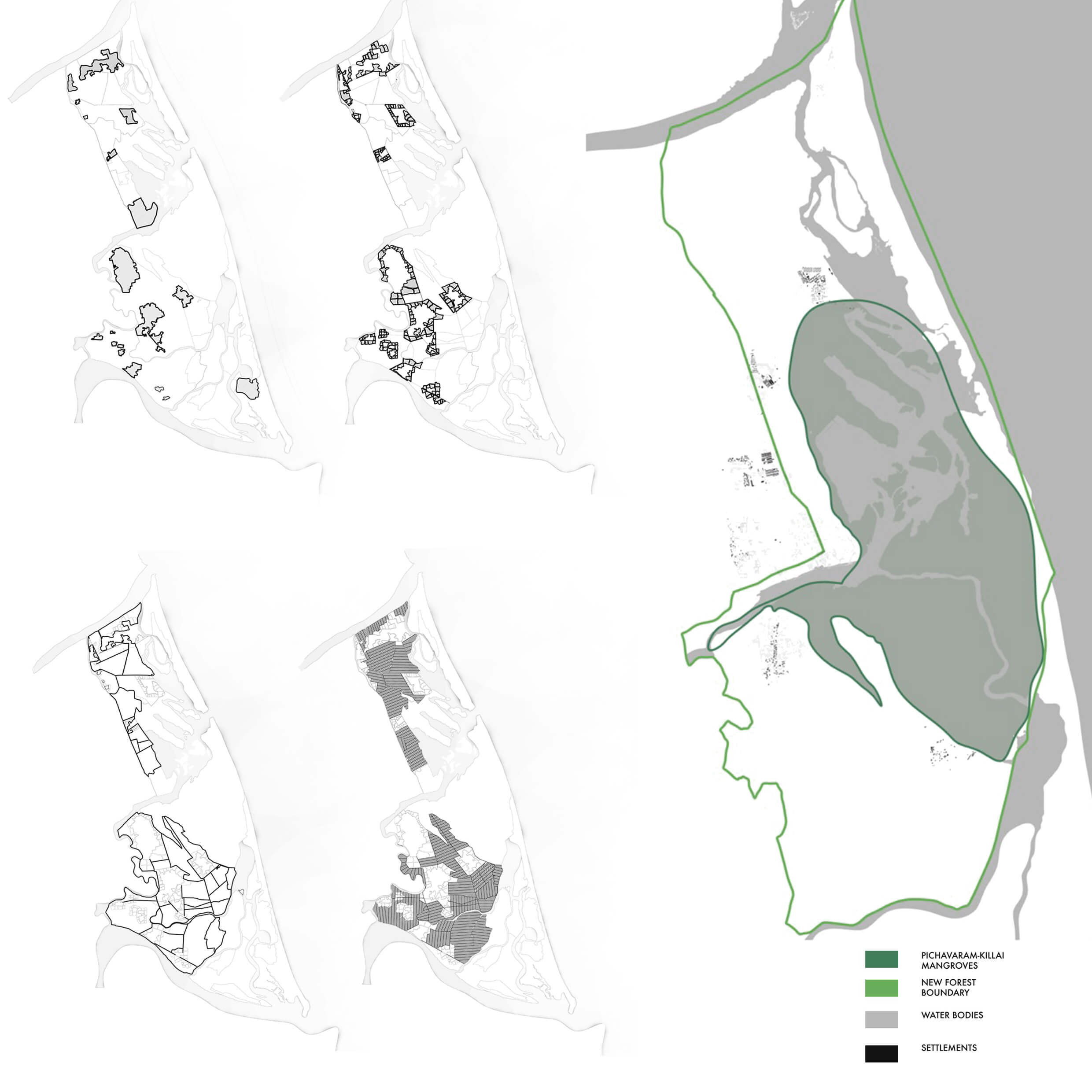
The botanical garden is so designed with a moated system by canals of 5m and constructed wetlands, that the existing morphology is bifurcated, and the limits of village are traced for definite boundary. Inter-connected botanical paths and introduction of fish bone canals make this a cohesive system. Annual inundation is expected to reduce where the water can be collected and recharged through wetland systems.
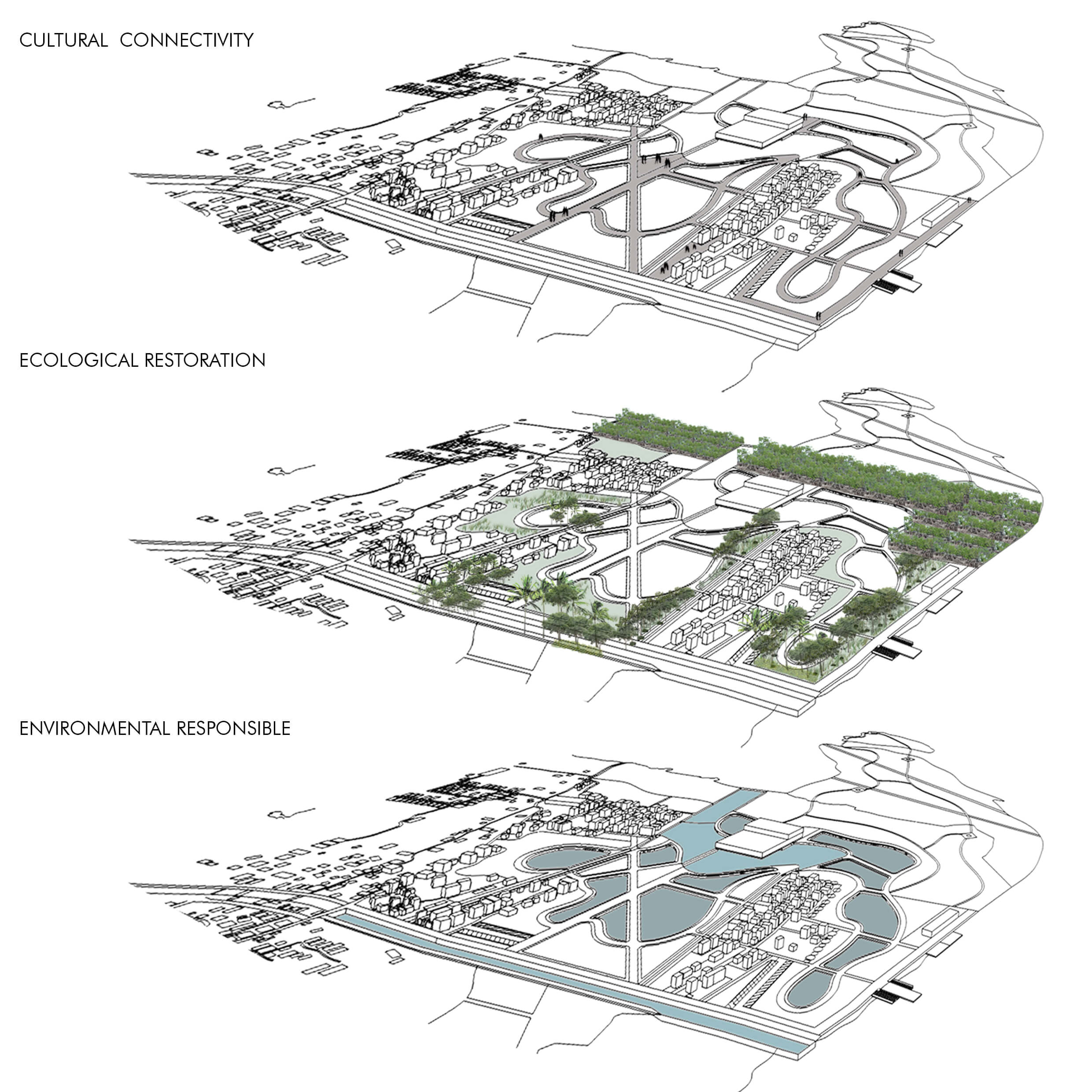
The prototype includes a built-up space on 1m high stilts, built of bamboo and local materials where sunlight and rainwater is harvested to minimise the use of non-renewable energy resources. The future of these villages is dependant on the connectivity from urban centre of Chidambaram. A rural stretch of 16km is proposed as the linkage between these two towns. Ecological and cultural nodes enhance the quality of this stretch and is an approach for sustainable tourism.
Neethi Lizbeth Abraham
DESIGN FIELD
Sustainable Architecture and Landscape Design.
LOCATION
Kottayam, Kerala, India
STUDIO NAME
Ipe Design Workshop
ABOUT
“I am the founding partner of Ipe Design Workshop, an architectural and landscape design practice based in Kottayam. Having finished with my post graduation from Politechnico di-milano, Italy, my interests are more inclined to enquires in landscape and sustainable living solutions. Sailing in this practice mode based at the tropics give me an advantage to understand the coastline-wetland, midlands and the elevated and on how they relate to each other even within their unique geographical advantages. Thriving to perform in such situation, I believe it is our responsibility to respond to a stranger climate situation held up in this mere geographical threshold. By understanding the scale of the mentioned concerns as a whole and a practice focused on to such a region, I believe to act in advocacy through teaching, research publishing’s and practice focused on to share the solutions, so that these could be practiced throughout in life, and not in just one design intervention.
“


